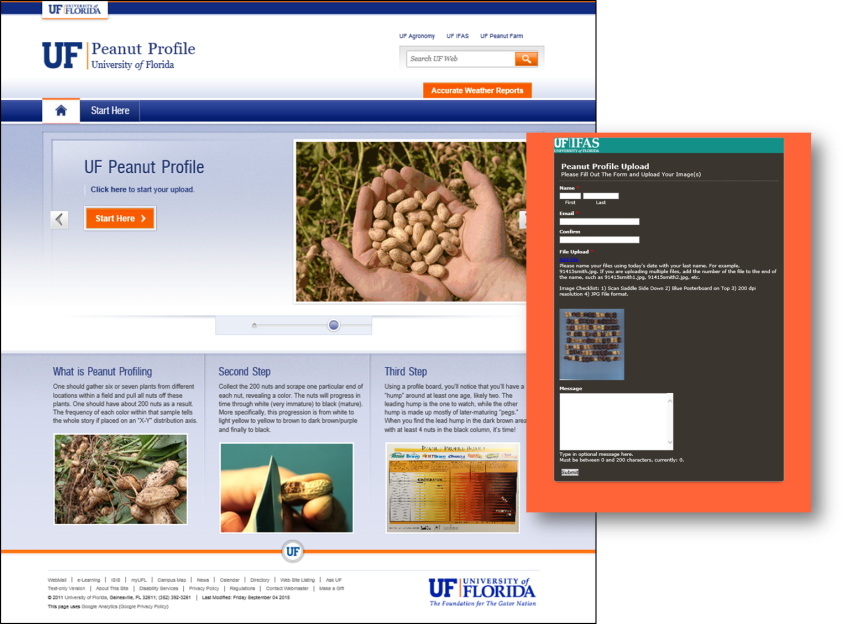By Diane Rowland
Even in the southeast, where annual rainfall totals would lead you to believe that water stress rarely occurs, depletion of soil water can develop quickly during the peanut growing season. There are certainly times when supplemental irrigation can reduce crop water stress and prevent yield reductions. Adding to the challenge of effectively irrigating the crop are the often unpredictable rainfall events, sometimes following irrigation applications, resulting in too much soil water and the risk of reducing peanut yield. To address these challenges associated with irrigation management, the University of Florida, University of Georgia, and Auburn University have been conducting research across multiple locations throughout Florida, Georgia, and Alabama for developing and refining an effective irrigation scheduling tool as part of the crop management tool called PeanutFARM.
The most recent improvement in PeanutFARM has been the development of a mobile devise friendly, web based platform to deliver both irrigation scheduling and harvest aid predictions (peanutfarm.org). Added features within the PeanutFARM smartphone application include a field GPS coordinate locator that automatically records the location of a particular field (when a grower is actually present at the field location) and associates the field with the closest weather station, including stations in FL, GA, AL, NC, and SC. A drop pin can also be placed on a map for selecting the field location, if the user is not using a mobile devise in the specific field. Identifying the field location and connecting to the closest weather station allows the program to automatically import daily evapotranspiration, maximum and minimum temperatures, and rainfall. These parameters are then used to calculate adjusted cumulative growing degree days (aGDDs) specific for peanut, which are used to estimate plant available water and demand over the growing season, as well as the maturity level of the crop. The rainfall received can also be edited to better match the amount of precipitation received at a specific field and will improve the irrigation recommendation considerably. In addition, the irrigation inputs can be recorded by the grower under the data tab on the home screen. An additional improvement to the PeanutFARM site is the option to request automated email alerts when the irrigation recommendation threshold is close to being reached.

The maturity tools offered in the PeanutFARM suite are two methods that both predict and quantify the maturity level of the crop. Maturity prediction is achieved through an automatic calculation of the aGDDs – a value of 2500 accumulated aGDDs has been shown to be predictive of optimal maturity for most available peanut cultivars. For those growers that collect a sample for blasting, a link is also provided under the PeanutPROFILE tab on the home screen to allow for image analysis and a specific days to digging quantification of the maturity level of the crop to be sent automatically in an email alert (http://agronomy.ifas.ufl.edu/peanutprofile/). When using PeanutPROFILE, a grower uploads a scanned image of blasted peanut pods to receive a days to dig estimation based on the percent of mature (brown and black) pods. Future updates for the PeanutPROFILE tool are aimed at allowing a grower to upload a picture of blasted pods taken from their smartphone directly, without having to scan the pods.